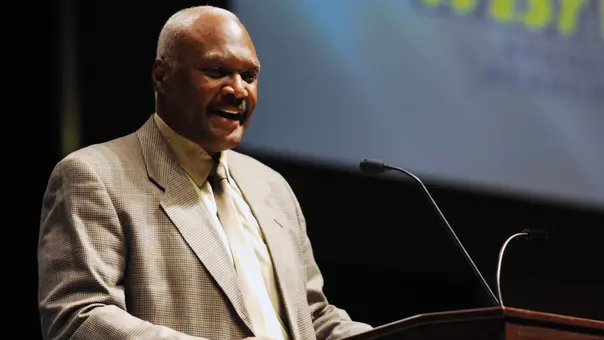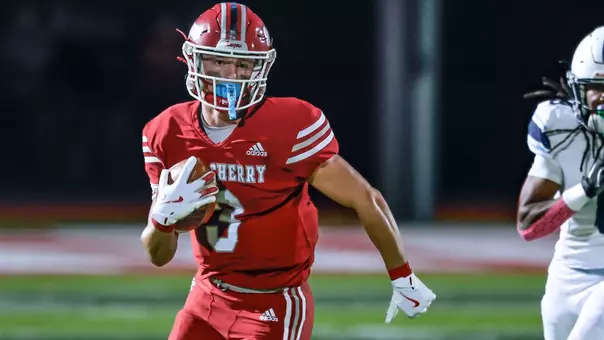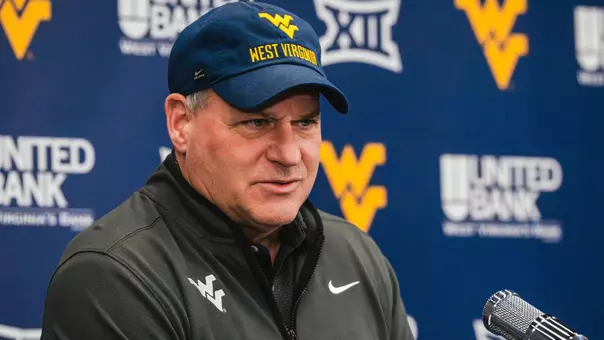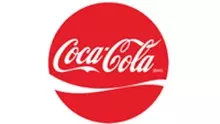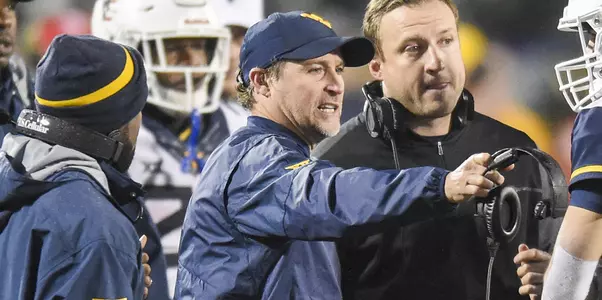
Photo by: All Pro Photography/Dale Sparks
Mountaineers Not Expecting a Repeat of 2012
July 24, 2018 04:56 PM | Football, Blog
MORGANTOWN, W.Va. – Probably the two things veteran coach Dana Holgorsen were asked the most about his West Virginia football team at last week's Big 12 media days in Frisco, Texas, were his defense and the comparisons to his 2012 squad that was also voted second in the preseason but finished in a four-way tie for fifth place.
In many ways, both are related.
If you recall, in 2012, West Virginia had the preseason offensive player of the year in quarterback Geno Smith, a couple of explosive playmakers surrounding him in Tavon Austin and Stedman Bailey, and lots of momentum coming off its stunning, 70-33 victory over Clemson in the 2012 Orange Bowl.
The Mountaineers, also predicted to finish behind Oklahoma that year, were expected to score lots of points, and they did, rolling up 69 in the season opener against Marshall and 118 in their first two Big 12 victories over Baylor and Texas.
However, following its impressive, 48-45 prime-time win at Texas, fifth-ranked WVU was blown out in its next two games by Texas Tech and Kansas State.
A season that appeared headed toward a Big 12 championship and a BCS bowl appearance turned on a dime after five straight losses, which included agonizingly close defeats against TCU and Oklahoma.
The defense shouldered most of the blame, giving up 30 points or more in eight regular season games including a seven-week span when it surrendered 63, 45, 49, 55, 39, 55 and 50 points in Big 12 play.
Well, hit the fast forward button to 2018 and on the surface, the comparisons to 2012 seem valid.
Like 2012, West Virginia this year was picked to finish second behind Oklahoma.
Like 2012, West Virginia has the league's preseason offensive player of the year at quarterback in senior Will Grier.
Like 2012, West Virginia possesses lots of veteran explosive offensive playmakers to surround its preseason player of the year.
And like 2012, the questions surrounding this year's team are mostly centered on the defensive side of the ball.
"Why have I gotten that question so many times?" a frustrated Holgorsen replied when confronted with yet another query about his defense. "I'll say this, Tony Gibson arguably has done as good a job as anybody in college football over the last five years of being a defensive coordinator. We have put good defenses out there.
"We had a little bit of a down year defensively last year, and I can attribute some of that to the offense's play – youth, inexperience, bad attitudes," Holgorsen continued. "I've got all of the confidence in the world that we will get back to where we were a couple of years ago."
Drawing comparisons between the 2012 and 2018 defenses is a big reach for a number of reasons.
One, Gibson wasn't around in 2012 to run the defense so he wasn't responsible for the team's poor play that year. Two, the new defensive staff that season changed the scheme from the 3-3 stack that West Virginia had been playing for years to a 3-4 scheme.
Necessity had forced the Mountaineers to recruit to their odd defensive scheme over the years, and that plan had worked well for them. They had accumulated a large number of hybrid, backend players capable of moving up close to the line of scrimmage if they got bigger or staying in the back of the defense if they remained the same size.
The players up front weren't very big, but they were suited for what they were being asked to do.
Also, the defensive players in the program were familiar with the scheme and were capable of helping the younger guys with its intricacies when the coaches weren't around.
All of that went out the window when the new scheme was adopted in 2012.
That will not be the case in 2018.
This will be Gibson's fifth year running his version of West Virginia's old odd-stack defense and all of the guys he's putting on the field this year understand what they have to do and also understand what is expected of them philosophically.
The growing pains and lumps these guys took last year could very well be the fertilizer needed for growth in 2018.
Another aspect of this year's team that is far different than in 2012 is the overall player depth Holgorsen has assembled in his Mountaineer program today.
It's really a night-and-day difference from 2012.
"Having a handful of pro guys is nice, and it's all good, but that's only 10 percent of your players that play. Now, your top-end guys can make a difference in ball games, there's no question about that," Holgorsen began.
"But those other 50 have to be pretty good, too. If you've got some weak links … that 2012 team was a prime example of that.
"We had five NFL guys on that team and the other 50 were not good enough to win the Big 12," he continued. "Everybody wants to talk about the collapse in 2012 and the first two Big 12 games we played, we gave up something like 120 points, or close to it. Now we scored more because of those NFL guys, but you can't keep that up."
And they didn't.
The top-end talent level this year is very comparable to 2012 when Smith, Bailey and Austin rewrote the WVU record books.
But their supporting cast in all three phases in 2012 just wasn't Big 12 caliber, particularly once the season wore on and West Virginia was forced deeper into its depth chart.
Holgorsen is confident this year's team has much more depth than that first one he put on the field for Big 12 play back in 2012.
"It's exciting, and I love having these guys sitting next to me here," he said. "I've spent a lot of time with these five guys talking them into coming back for their senior year and one of the reasons they came back is because we've got a lot of other good players.
"Now, whether they're NFL players or just good, solid college players like (linebacker) Jared Barber and (cornerback) Terrell Chestnut … we were pretty good that year," Holgorsen noted. "We won eight and had a handful of NFL guys, but also we had enough program guys to where we had a good year."
The expectation within the program in 2018 is that the Mountaineers have enough of a supporting cast surrounding their frontline players to put together another outstanding season.
They are also going to put a defense out on the field that is far better than the one they had out there in 2012, you can count on that.
Will that be good enough to knock off top-dog Oklahoma, or hold off Texas, TCU, Kansas State, Oklahoma State and the rest of the Big 12?
We'll see.
In many ways, both are related.
If you recall, in 2012, West Virginia had the preseason offensive player of the year in quarterback Geno Smith, a couple of explosive playmakers surrounding him in Tavon Austin and Stedman Bailey, and lots of momentum coming off its stunning, 70-33 victory over Clemson in the 2012 Orange Bowl.
The Mountaineers, also predicted to finish behind Oklahoma that year, were expected to score lots of points, and they did, rolling up 69 in the season opener against Marshall and 118 in their first two Big 12 victories over Baylor and Texas.
However, following its impressive, 48-45 prime-time win at Texas, fifth-ranked WVU was blown out in its next two games by Texas Tech and Kansas State.
A season that appeared headed toward a Big 12 championship and a BCS bowl appearance turned on a dime after five straight losses, which included agonizingly close defeats against TCU and Oklahoma.
The defense shouldered most of the blame, giving up 30 points or more in eight regular season games including a seven-week span when it surrendered 63, 45, 49, 55, 39, 55 and 50 points in Big 12 play.
Well, hit the fast forward button to 2018 and on the surface, the comparisons to 2012 seem valid.
Like 2012, West Virginia this year was picked to finish second behind Oklahoma.
Like 2012, West Virginia has the league's preseason offensive player of the year at quarterback in senior Will Grier.
Like 2012, West Virginia possesses lots of veteran explosive offensive playmakers to surround its preseason player of the year.
And like 2012, the questions surrounding this year's team are mostly centered on the defensive side of the ball.
"Why have I gotten that question so many times?" a frustrated Holgorsen replied when confronted with yet another query about his defense. "I'll say this, Tony Gibson arguably has done as good a job as anybody in college football over the last five years of being a defensive coordinator. We have put good defenses out there.
"We had a little bit of a down year defensively last year, and I can attribute some of that to the offense's play – youth, inexperience, bad attitudes," Holgorsen continued. "I've got all of the confidence in the world that we will get back to where we were a couple of years ago."
Drawing comparisons between the 2012 and 2018 defenses is a big reach for a number of reasons.
One, Gibson wasn't around in 2012 to run the defense so he wasn't responsible for the team's poor play that year. Two, the new defensive staff that season changed the scheme from the 3-3 stack that West Virginia had been playing for years to a 3-4 scheme.
Necessity had forced the Mountaineers to recruit to their odd defensive scheme over the years, and that plan had worked well for them. They had accumulated a large number of hybrid, backend players capable of moving up close to the line of scrimmage if they got bigger or staying in the back of the defense if they remained the same size.
The players up front weren't very big, but they were suited for what they were being asked to do.
Also, the defensive players in the program were familiar with the scheme and were capable of helping the younger guys with its intricacies when the coaches weren't around.
All of that went out the window when the new scheme was adopted in 2012.
That will not be the case in 2018.
This will be Gibson's fifth year running his version of West Virginia's old odd-stack defense and all of the guys he's putting on the field this year understand what they have to do and also understand what is expected of them philosophically.
The growing pains and lumps these guys took last year could very well be the fertilizer needed for growth in 2018.
Another aspect of this year's team that is far different than in 2012 is the overall player depth Holgorsen has assembled in his Mountaineer program today.
It's really a night-and-day difference from 2012.
"Having a handful of pro guys is nice, and it's all good, but that's only 10 percent of your players that play. Now, your top-end guys can make a difference in ball games, there's no question about that," Holgorsen began.
"But those other 50 have to be pretty good, too. If you've got some weak links … that 2012 team was a prime example of that.
"We had five NFL guys on that team and the other 50 were not good enough to win the Big 12," he continued. "Everybody wants to talk about the collapse in 2012 and the first two Big 12 games we played, we gave up something like 120 points, or close to it. Now we scored more because of those NFL guys, but you can't keep that up."
And they didn't.
The top-end talent level this year is very comparable to 2012 when Smith, Bailey and Austin rewrote the WVU record books.
But their supporting cast in all three phases in 2012 just wasn't Big 12 caliber, particularly once the season wore on and West Virginia was forced deeper into its depth chart.
Holgorsen is confident this year's team has much more depth than that first one he put on the field for Big 12 play back in 2012.
"It's exciting, and I love having these guys sitting next to me here," he said. "I've spent a lot of time with these five guys talking them into coming back for their senior year and one of the reasons they came back is because we've got a lot of other good players.
"Now, whether they're NFL players or just good, solid college players like (linebacker) Jared Barber and (cornerback) Terrell Chestnut … we were pretty good that year," Holgorsen noted. "We won eight and had a handful of NFL guys, but also we had enough program guys to where we had a good year."
The expectation within the program in 2018 is that the Mountaineers have enough of a supporting cast surrounding their frontline players to put together another outstanding season.
They are also going to put a defense out on the field that is far better than the one they had out there in 2012, you can count on that.
Will that be good enough to knock off top-dog Oklahoma, or hold off Texas, TCU, Kansas State, Oklahoma State and the rest of the Big 12?
We'll see.
Players Mentioned
Rich Rodriguez | Dec. 3
Wednesday, December 03
Reid Carrico | Nov. 29
Saturday, November 29
Jeff Weimer | Nov. 29
Saturday, November 29
Rich Rodriguez | Nov. 29
Saturday, November 29
